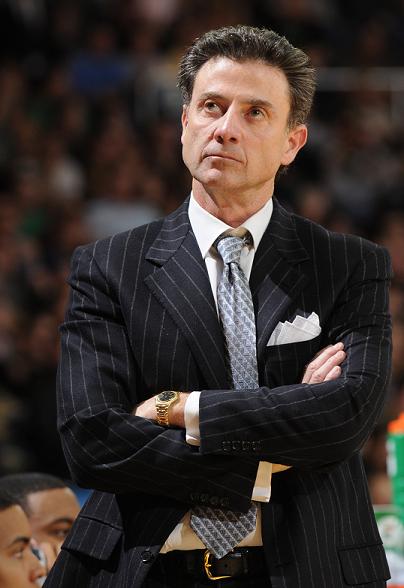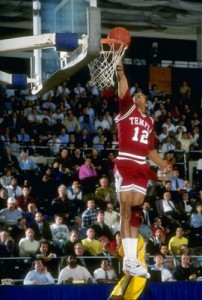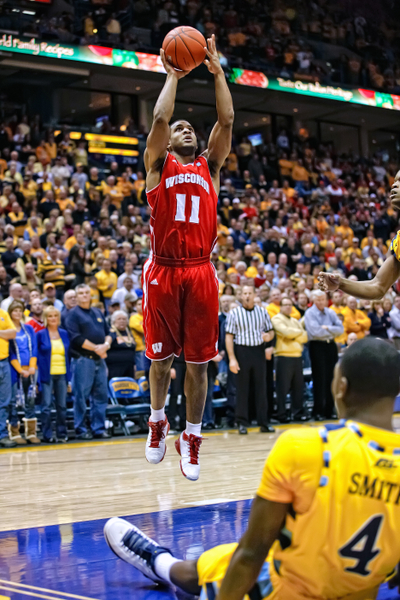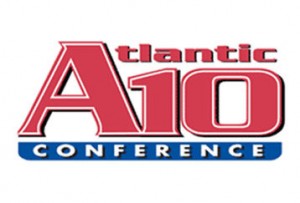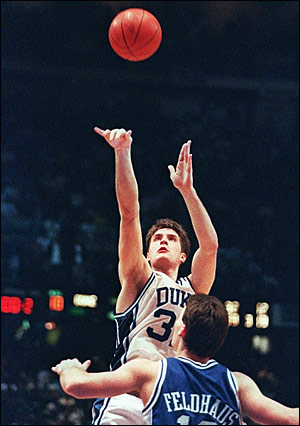
Joe Dzuback of Villanova By the Numbers is the RTC correspondent for the Atlantic 10 Conference.
Road Warriors
A few BCS schools developed reputations for rarely venturing far from their home arenas during their out of conference seasons and relying on their conference’s RPI to bolster their resumes come Selection Sunday. Coach Jim Calhoun masked the inexperience of his 2007 Huskies by keeping them at home from early November to late December where they ran off 11 straight wins and rose to #12 in the polls. They opened the Big East season with a 10 point loss to West Virginia, and continued to implode with an 6-14 record through January, February and early March. The 1st round of the Big East Tournament was their post-season. Florida State’s Len Hamilton nursed his 2006 Seminole squads to an 9-1 OOC record, leaving home once before ACC conference play (a loss to in state rival Florida). FSU finished with a 9-7 conference record, and despite a signature win over #1-ranked Duke at the end of the conference season, could not tease a dance bid out of the Selection Committee come Selection Sunday.
A10 coaches have no illusions that the conference’s reputation (however good among the non-BCS conferences) will carry a bubble team into the field of 65. While few subscribe to former Temple head coach John Chaney’s “Anyone, Anywhere” philosophy, everyone recognizes the virtue of playing invitational tournaments and having a healthy dose of road games on the resume. Most of their OOC resume-building games may come from traditional rivalries and invitational fields, but the road games, at worst, help their squads prepare for the hostile crowds they will face when playing conference opponents. How did the conference members do this OOC season?
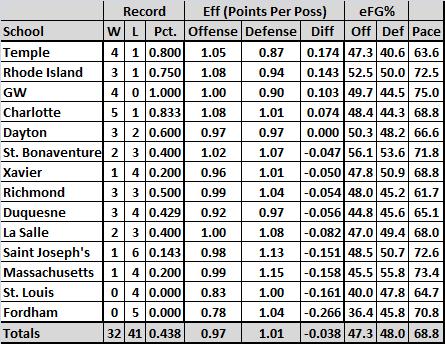
The statistics, drawn from each team’s Game Plan page at Ken Pomeroy’s website, shows the team’s road (away and neutral site) record, the team’s efficiency (points per possession the team scored – offense and allowed – defense), the team’s shot efficiency (on offense and defense) and the estimated average possessions per game.
Temple looks better with each passing week. The road wins in particular are very encouraging and suggest the Owls will be able to score and defend in hostile venues. Seton Hall is a resume win, and the 46-45 loss at Georgetown (provided the Hoyas don’t implode again in 2010…) will be a good loss. The nucleus of Fernandez, Brooks, Allen and Guzman (see Temple Team Capsule below) are putting together a very nice run, which they may well be able to sustain going into conference play. File Rhode Island and Charlotte under “Surprised in a Good Way” also. Though the Rams’ slate is a bit light (they did not participate in any MTE tournaments this season), it does include a double-digit win over Boston College from the ACC and a 2 point loss to a well-regarded 7-2 Virginia Commonwealth team on 12/2. Charlotte was torched early in the season by Duke at the Cameron, but has bounced back nicely with double-digit wins over Hofstra, Louisville of the Big East and Winthrop, each of whom has a record of .500 or better.
Filed under “Surprised in a Bad Way” — try Dayton, Duquesne and Richmond. The Flyers participated in the Puerto Rico Tip Off and started strong, taking out Georgia Tech in their first round. They dropped their next two games to two more BCS teams (Villanova and Kansas State) and have scraped by their two road opponents — Miami, OH and George Mason. Mason having a down year, is teetering at .500 (5-5) at this point and will, should the trend continue, watch the post-season on CBS and ESPN. Duquesne started out well, housing Iowa in their second game of the season, but the two-overtime, neutral court loss to Pittsburgh seems to have thrown the team out of synch. They were hammered by West Virginia and lost to UIPIU last weekend. The Jaguars may be the pick of the litter in the Summit League, but they too have taken three double-digit beatings. Hardly makes for a stirring endorsement of the Dukes. Bolding’s return may spark the Dukes, but heading into conference play (they have 2 more OOC games left), Duquesne’s prospects for A10 road wins seem uncertain at best. Taking South Carolina may have been a stretch for Richmond, but their losses to in-state rivals William & Mary and Virginia Commonwealth (both of the CAA) gives me pause to think. Those games most resemble the conference road conditions Richmond will probably encounter in conference play. Both may have been “close” losses, but they were losses nevertheless.
George Washington’s 4-0 road record may look impressive, but know the opponents were UNC – Wilmington, Boston University, Navy and Towson. Not a BCS team to be found in a group whose collective record is 15-24. Their extended, post holiday trek through New England should provide a bit more insight into the state of the program and their prospects in conference road play. The unimpressive road/neutral records posted by Xavier, Massachusetts, Saint Joseph’s and St. Louis (a combined 3-18) maybe due in large measure to the youth of all three squads. Ken Pomeroy ranks them by experience level as #259, #305, #156 and #346 respectively, out of D1’s 347 D1.
Standings as of – 12/21/09:
- Temple (9-2)
- Rhode Island (9-1)
- Charlotte (9-2)
- Dayton (9-2)
- Richmond (9-3)
- George Washington (8-2)
- Duquesne (8-4)
- La Salle (7-4)
- Xavier (7-4)
- St. Louis (8-4)
- St. Bonaventure (6-5)
- Massachusetts (6-6)
- Saint Joseph’s (4-6)
- Fordham (2-8)
Team Rundowns…
Charlotte
Taking to the road, the 49ers beat Winthrop by ten, 57-47, on Sunday (12/20). Junior forward Shamari Spears delivered from the field, going 5-11 from the floor for 13 points (his 45.5% shooting percentage well ahead of the team’s overall 39.1%), while senior point guard DiJuan Harris delivered from the line, hitting 7 of 8 free throws to pace Charlotte to the win. Junior center Phil Jones grabbed 11 rebounds as the taller, more physical 49er team dominated with inside play. The A10 team received ten more free throw opportunities than the host, and made the most of the advantage by converting 13 more times, going 18-22, compared to 5-12 for the Eagles. There indeed was the margin of victory. Charlotte has now won five straight, all by double-digits. The Niners traveled to Old Dominion on Wednesday (12/23) for one last game before the Holidays and got thumped, 81-48, after shooting 16% in the first half and appearing generally uninterested. They resume their schedule when they host Mercer on the 29th.
Dayton
The Flyers beat Presbyterian by 19 (71-52) at the UD Arena on Saturday (12/19), paced by junior forward Chris Wright and senior back-up point guard Mickey Perry, each of whom scored 15 points. Perry, normally in the rotation for about 17 minutes per game saw 25 minutes when off-guard Marcus Johnson went down with an ankle sprain in the 1st half. Redshirt freshman Josh Benson scored 10 points, also in extended action, when starter Chris Johnson left the game after a blow to the head, also sustained in the 1st half. Dayton beat Appalachian State, 65-49, on Monday night. The Blue Hose and Mountaineers should have been double digit wins, and the Dayton team many expected in November appears to be rounding into form as the conference season approaches. Wright and Perry led the team in scoring for both games, grossing 29 and 30 points apiece respectively for the two games. The Flyers return to action after the Holidays with a game versus Boston University on the 29th. They will ring in the New Year in Albuquerque, New Mexico as they take on the Lobos of New Mexico on New Year’s Day.
Duquesne
The Dukes needed two overtimes to put down the Griffins of Canisius 86-77 on Wednesday 12/16. Duquesne used size and speed to force turnovers and alter shots, but they did not control the boards. The game, played for 68 possessions (adjusted for the overtimes), was a bit low for Duquesne home games this season. The Dukes’ offensive efficiency was about 1.00 (points per possession), very slightly above their home court average, the defense, at 0.90, was higher than the Dukes’ 0.81 home average, suggesting the stifling defense, especially on opponent’s shooting, was simply not there. Duquesne dropped a nine point road game, 73-64, to IUPUI in Indianapolis, IN on Saturday 12/19. Continuing a trend for road games, Duquesne’s defensive efficiency again turned in a >1.00 defensive effort, 1.05 this time. The Iowa game in November aside, the Dukes have had problems keeping opponent’s points per possession under 1.00 this season. The culprits appear to be shot defense (the Dukes let the Jaguars hit at a 56.5% eFG% clip) and rebounding. Duquesne hosts St. Francis, PA on Tuesday 12/22, then break for Christmas. They finish their OOC schedule with a trip to Virginia to play the Monarchs of Old Dominion on Wednesday 12/30.
Fordham
The Rams “hosted” Villanova at the IZOD Center, in the New Jersey Meadowlands last Saturday. Before a Villanova-friendly crowd, Fordham dropped a 96-53 decision to the #9-ranked Wildcats. The good news has to be that forward Chris Gaston had another good day scoring. Another Ram has to step into the vacuum left by Jio Fontan. Fordham faced James Madison in Virginia on Wednesday and dropped a disappointing one, 85-73, after leading by nine at the half. They now break for the Holiday. They resume their pre-conference road trip with games against Kennesaw State (in Georgia, Tuesday 12/29) and Hampton (back to Virginia, Sunday 1/3) in the fortnight before they take on Massachusetts in their A10 opener.
George Washington
George Washington took a week to finish the fall semester. They squeaked out an 84-80 victory at East Carolina on Tuesday 12/22, led by Damian Hollis’ 21/3 and Tony Taylor’s 20/6/4. They will take a New England road trip the week after Christmas, facing Holy Cross in Worcester, MA on Monday 12/28, then travelling east to Cambridge, MA to face Harvard on Wednesday 12/30. They will return to Washington to face cross-town rival Howard on Saturday 1/2.
La Salle
The Explorers beat Bucknell, 83-70, at home on Saturday then dropped a road game to Oklahoma State 77-62, on Monday night. The Explorers continue to feel the effects of being an undermanned squad. With senior PG Ruben Guillandeaux out indefinitely with a stress fracture in his right foot, and senior swingman Kimmani Barrett nursing a fractured middle finger on his non-shooting hand, La Salle needs to free Rodney Green to cut and shoot, rather than take over the ball-handling duties. Green continues to lead the Explorers in points scored — he scored 22 in each of last week’s games (Barrett scored the team-high 23 points versus Bucknell), but needs to maintain his stamina through the end of the game. La Salle will host Cornell on 12/29 in what may be their last best chance to score a signature win in the OOC. Cornell beat St. John’s to take the ECAC Holiday Festival on Monday (12/21) night.
Massachusetts
Coach Derek Kellogg’s squad scored their best win of the season Saturday night when they downed the Tigers of Memphis 73-72 in Boston. Freshman Terrell Vinson scored a team-high 21 points on 8-13 (0-1, 8-12) and 5-7 shooting. Vinson grabbed nine boards, missing the chance to log his second consecutive double-double. The Minutemen headed out of town to Chestnut Hill to take on Boston College on Wednesday night and were stifled from beyond the three-point arc, shooting 3-21 (14.3%) resulting in a 67-79 loss to the Eagles. After the Holiday break they conclude their OOC schedule with a trip into the South to play Davidson on Wednesday 12/30.
Rhode Island
The Rams extended their winning streak to five when they beat Fairfield 89-84 on Saturday (12/20). Senior guard Keith Cochran stepped back a bit in this game, letting the forward tandem of Delroy James and Lamonte Ulmer take the offensive lead. The seniors did not disappoint, scoring 21 and 20 points, respectively. James logged his first double-double of the season by grabbing 11 rebounds as well. Marquis Jones and Stevie Mejia handled the point guard duties effectively, dishing ten assists (with only four turnovers) between them. Rhode Island has three more OOC games before they commence conference play, the first coming next Tuesday (12/29) when they travel to Philadelphia to play Drexel.
Richmond
The Spiders dropped their road game to South Carolina last Wednesday (12/16), 76-58. The result may not have surprised; after all, Devan Downey, Sam Muldrow and Brandis Raley-Ross can be a handful, especially in front of a Gamecock-friendly crowd. The margin was troubling as the Spiders will — should their fortunes during conference play pan out — be looking for an at-large bid from the selection committee come that Sunday in March. Justin Harper, Dan Geriot and Kevin Anderson took large amounts of the possessions when they were on the floor (29.5%, 28.4% and 30.0% respectively — Anderson played the entire game), but of that core only Harper converted efficiently. With an eFG% of 54.2% and a PPWS of 1.16, Harper developed an offensive rating of 111.6; an offensive rating greater than 100 is good, greater than 110 is very good. For Geriot and Anderson however, the numbers were not nearly as impressive. Both converted (eFG%) in the high 30s to mid 40s, but worse, both lost high percentages of their possessions: Geriot lost 30.4% of his possessions, while for Anderson the number was 26.1%. Where was David Gonzalvez? Out of action with four fouls, for starters. The senior guard logged only 65% of the minutes, in large measure because he picked up his second foul at the 12 minute mark of the first half, sat for five minutes, came back in for another five minutes before picking up his third foul for the half. Gonzalvez picked up his fourth foul two minutes into the second half, and found himself watching as the Spiders four point advantage became a five point deficit. The Spiders managed to bring the score to a tie, 52-52, with eight minutes left, but the Gamecocks launched a 24-6 run over the last eight minutes, running away from the Spiders and handing them their third road loss of the season. Richmond bounced back with a 56-53 win over #13 Florida in the Orange Bowl Classic on Saturday. The game, played at Sunrise, FL (and not Florida’s homecourt at Gainesville), found the Spiders paced by the backcourt duo of Gonzalvez (16 points) and Anderson (14 points). The two minute mark of the 1st half found the Spiders down by 13 (32-19), but Gonzalvez and senior center Geriot scored five unanswered points. Still trailing by eight (32-24), Coach Mooney and his squad took to the locker room to regroup. A 22-5 run over the first nine minutes of the 2nd half saw the Spiders blow by the Gators and take a nine point lead. The Gators scored six unanswered points (a jumper by Georgetown transfer Vernon Macklin, two converted free throws by sophomore guard Erving Walker and a layup by senior forward Dan Werner) to cut the deficit to three over the next 90 seconds. The two teams were locked in a tug-of-war, never separated by more than four points (and tied twice) for the last 9:30 of the game. The Spiders took the lead for good on a Gonzalvez three-pointer at the 1:34 mark, and the Spiders hit their free throws down the stretch to bring home the win. After beating UNC – Greensboro, 89-63 (David Gonzalves posted a season-high 25 points), the Spiders can now break for the holidays. Richmond will return to action on the 28th against another North Carolina school, the Seahawks of UNC – Wilmington. The Spiders will spend New Year’s Eve on the road with yet a third North Carolina school, the Demon Deacons of Wake Forest.
Saint Joseph’s
The Hawks beat Lehigh 77-66 on Sunday (12/20) and are off until after Christmas. Senior guard Darrin Govens paced the team with 15 points, while three others, starting sophomore guard Chris Prescott along with two freshmen, forward Carl Baptiste and guard Carl Jones chipped in 13 apiece. Sophomore forward Bryant Irwin scored a career-high 11 points. Saint Joseph’s will travel to Albany, NY and will face the Siena Saints on Tuesday (12/29).
St. Bonaventure
The Bonnies dropped a 13-point decision to the Orange of Syracuse 85-72, Saturday (12/19). Sophomore forward Andrew Nicholson and senior guard Chris Matthew led the Bonnies with 18 and 17 points, respectively. The Orange answered with 17, 18 and 17 points from junior forward Rick Jackson, transfer wing Wes Johnson and sophomore forward Kris Joseph, respectively. St. Bonaventure traveled to Little Three rival Niagara on Tuesday (12/22) for one last game before Christmas, but couldn’t get the job done, losing 71-77. They return to action on Wednesday the 30th, as they host Canisius.
St. Louis
Coach Majerus’ squad beat Belmont, 75-67, on Wednesday (12/16), then lost to Missouri State, 73-63, on Saturday (12/19). Sophomore guard Kwamain Mitchell, poked in the right eye with 2:59 to go in the Belmont game, was held out of the Missouri State game. The Billikens could have used his 14.3 PPG on Saturday. After winning by seven (61-54) at home against Missour-Kansas City on Tuesday 12/22, the Billikens break for Christmas, and return to action against Eastern Illinois on Tuesday 12/29. Let’s hope Mitchell’s recovery is swift and complete.
Temple
Looking for a definition for “on a roll?” Check out the Owls!
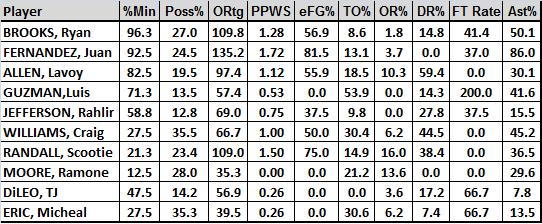
After knocking off Villanova on the 13th, the Owls headed up the New Jersey Turnpike to Newark and housed the Seton Hall Pirates in their downtown arena, the Rock. Down by 13 twice early in the 2nd half, Temple took a 40-21 run in the last 16 minutes to hand yet another Big East team their first loss of the season. The two game snapshot above suggests that a nucleus of Ryan Brooks, Juan Fernandez and Lavoy Allen has taken the reins on offense and has efficiently converted possessions into points. Fernandez and Brooks took turns having career games, but that each was able to step in is a very good sign going forward. Scootie Randall and Craig Williams should see their minutes grow; Randall because he has provided timely offense in both games, and Williams has taken the injured Michael Eric’s spot in the rotation. Of particular interest is the Owls’ rebounding. They dominated both of their Big East opponents, a bit surprising given the Big East’s reputation for physical inside play. Especially noteworthy is the defensive rebounding coach Fran Dunphy is getting from his backcourt and wing players (Brooks, Guzman, Moore and Di Leo); 15% is a good number for a front court player, the 14%+ the four are registering is terrific. Allen and Williams’ DR% is phenomenal, but simply not sustainable. Guzman’s turnovers are high, but he has brought the ball up against two teams known for their press and ability to harass ball handlers. Like Allen and Williams’ defensive rebounding, the number will probably not hold.
Xavier
The Musketeers traveled to Indianapolis, IN to take on the Butler Bulldogs, losing a 69-68 nail-biter on an unusual clock malfunction. Xavier trailed through the first half, dropping behind by double digits ranging out to 15. They closed the gap to seven before the break, then came out with an 11-0 run to overtake the Bulldogs. Jason Love and Kenny Frase were beginning to control the paint, as Terrell Hollaway hit several critical threes from the outside. The X-Men were held the lead for over 13 minutes in the second half, but a Butler surge tied the game at the four-minute mark, and the teams traded the lead (and tied) five more times over the last four minutes. Jordan Crawford’s trey with 45 seconds left broke the fourth tie and gave Xavier a three point cushion. Holloway’s fifth foul at the 39 second mark put Butler guard Shelvin Mack on the line. Mack hit both free throws, but Xavier had possession with just over a shot clock’s worth of time left. A steal by Butler guard/forward Gordon Hayward with 36 seconds left gave Butler three tries (two misses and offensive rebounds) before Hayward converted on a layup with an unknown amount of time left on the clock. According to the clock itself there appeared to be 1.8 seconds left, but the time keeper reported an earlier malfunction had prevented the clock from starting properly earlier in the Butler possession. The referees (D.J. Carstensen, Sid Rodeheffer and Bo Borowski) decided there was no time left and called the game. Xavier then hosted in-state rival Miami, OH on Wednesday 12/23. The Muskies almost fell victim once again to a clock-related question at the end of that one. Xavier’s Dante Jackson stole an in-bounds pass with less than seven seconds left which would have sealed the Xavier victory, but the play was blown dead because one of the zebras was checking the clock. On the re-do, Miami’s Kenny Hayes missed a long three at the buzzer that would have tied it and Xavier won, 70-67. After breaking for the Holiday, the Musketeers will conclude the OOC portion of their season with two BCS opponents — LSU (at home) on Tuesday 12/29 and Wake Forest (in Winston-Salem) on Sunday 1/3.
Games to Catch
- La Salle vs Cornell, Tuesday 12/29 — The Big Red are heavy favorites to grab the Ivy’s bid to the NCAA. I am interested, given Cornell’s win over St. John’s (a team looking to improve it’s standing in the Big East this season) in the ECAC Holiday Festival, to see how the Explorers match up.
- Xavier vs LSU, Tuesday 12/29 — The Musketeers host the Tigers during holiday week. While LSU was not expected to be a force in the SEC West this season, Xavier has a good chance to match up (indirectly) with two BCS teams expected to make some noise in their respective conferences, Connecticut and Arizona State. The Huskies beat the Tigers by 26 at the NIT Season Tip-Off (semifinal game), while the Sun Devils took LSU by 19 a round later.
- Richmond at Wake Forest, Thursday 12/31 — The Spiders get another road test, this time against ACC contender Wake. The Spiders’ front court contingent of Dan Geriot, Justin Harper and Ryan Butler will have to match up with the Deacons’ Al-Farouq Aminu and Chas McFarland.
- Dayton at New Mexico, Friday 1/1 — The Lobos are not a BCS power, nor are they favored to take their conference bid (the Mountain West) this season. But their homecourt, an 18,000 seat hole-in-the-ground in Albuquerque, NM known simply as “The Pit,” is a legend. A notoriously difficult place for visitors to win. The Flyers are expected to win the A10 title this season, and The Pit will be a good place to get ready for hostile crowds, and lots of noise.





























